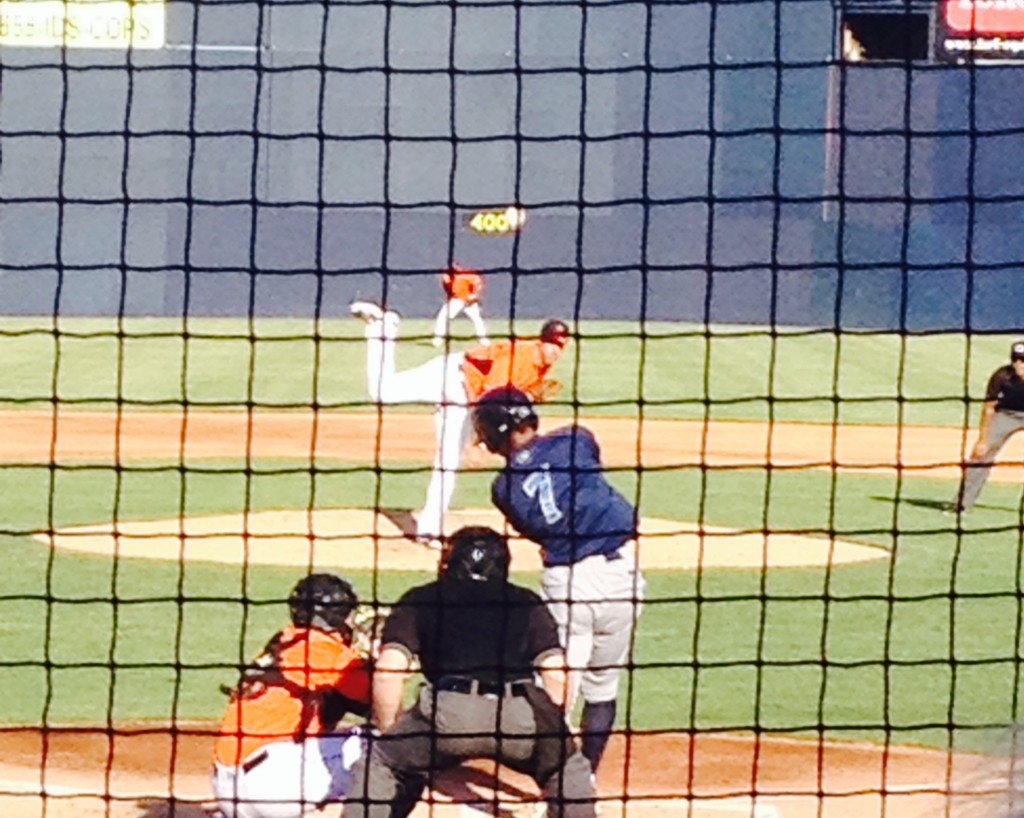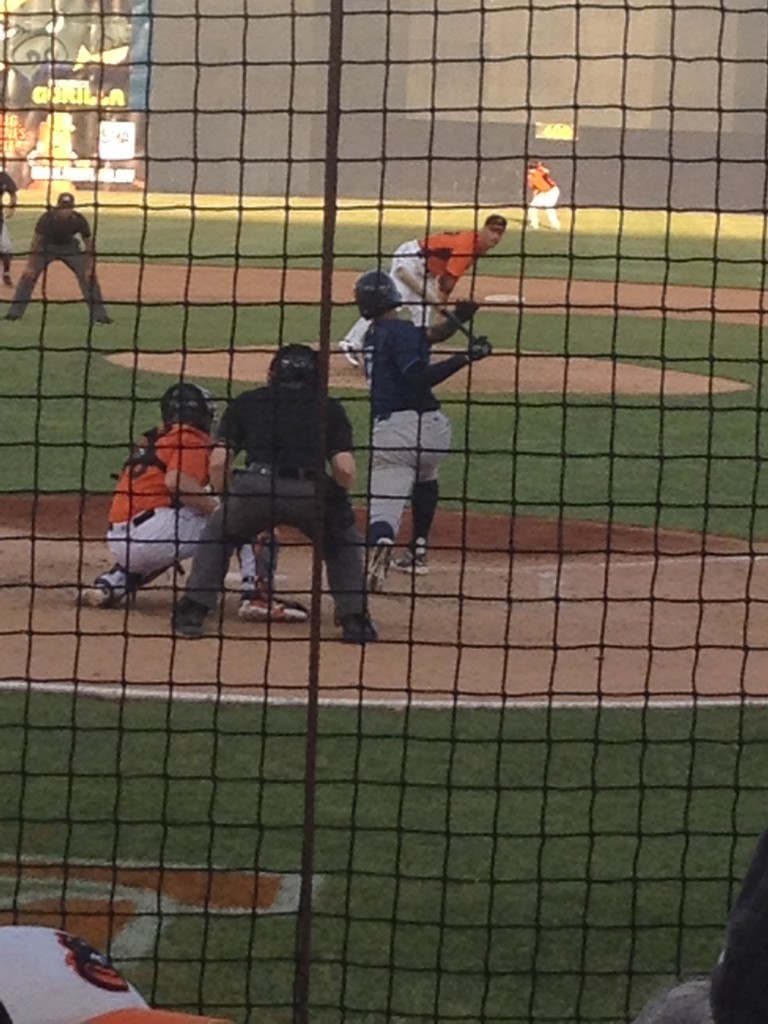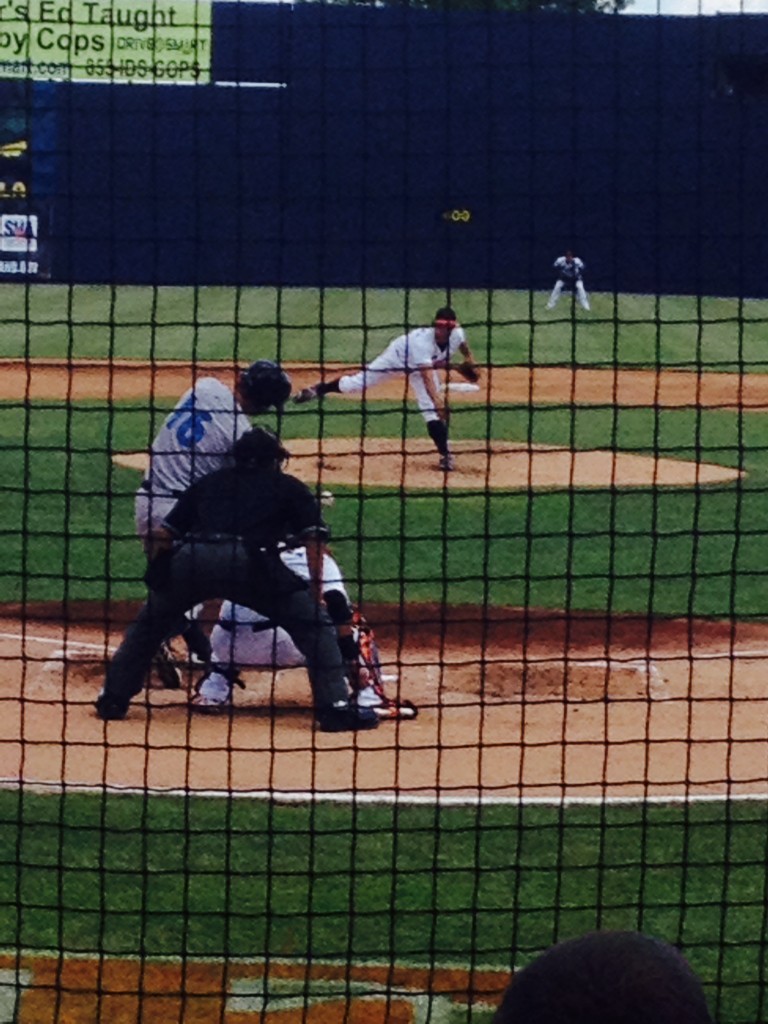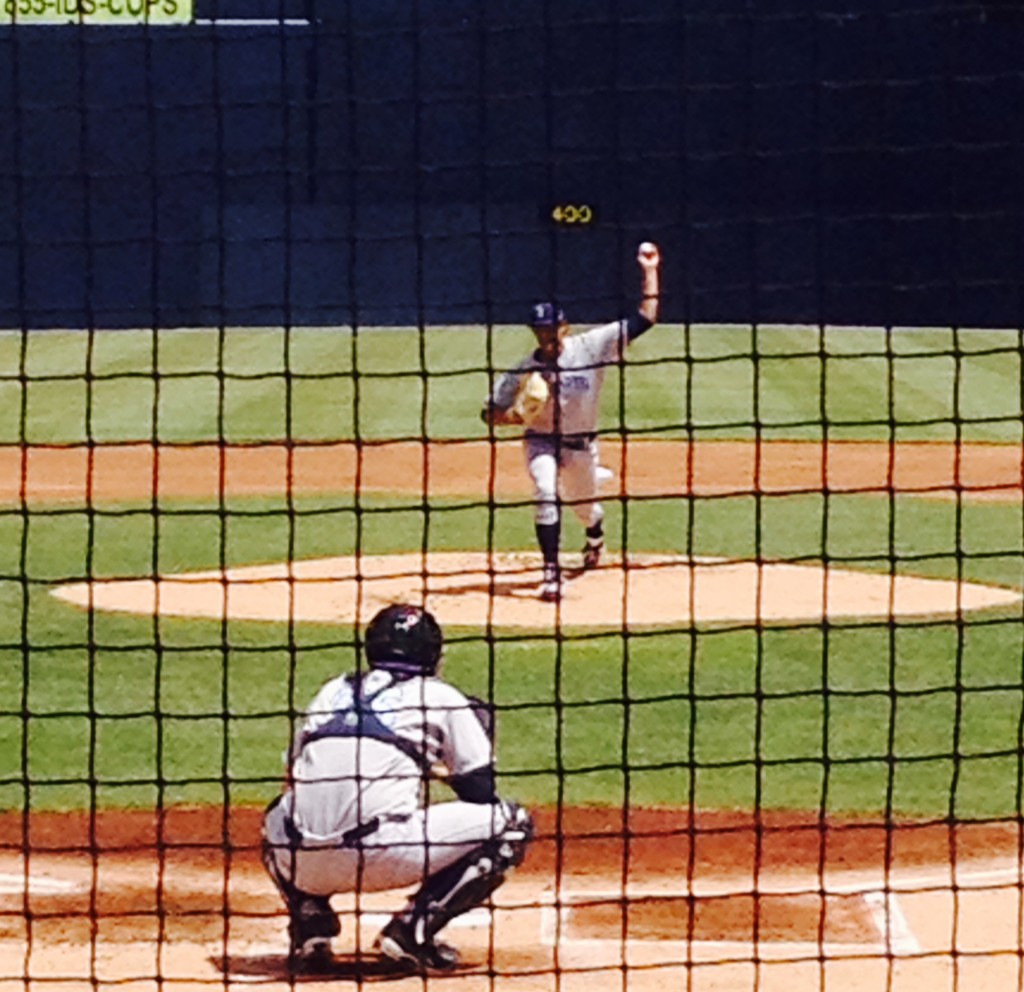The weather locally this weekend was sheer nirvana and like college kids drawn to Natural Light, I was not going to miss the opportunity to drive to Frederick, as the Keys were hosting the Wilmington Blue Rocks, the Hi-A affiliate of the Kansas City Royals. Due to several rainouts, the games this weekend were the first I have attended at Harry Grove Stadium in 2014, easily my favorite local minor league park.
The Wilmington roster may be the most loaded from a prospect perspective in all the minor leagues, so naturally I wanted to get an up-close look at the Blue Rocks. Not to mention my rapidly developing prospect Man-crush on Raul Mondesi would not allow me to avoid Frederick this weekend. These are some of my scouting notes from this weekend’s series.
Raul Mondesi SS Wilmington Blue Rocks
Mondesi is everything I dreamed of and more – in the 5th inning Saturday I looked over at a baseball acquaintance of mine and said “I can actually feel myself falling in love with him”. The man nodded approvingly and understandingly.
Mondesi is a lean, wiry, switch-hitting shortstop with athleticism simply dripping off his body. A quick-twitch athlete, Mondesi has easy above-average speed, a cannon-like throwing arm, and is a no doubt shortstop prospect at the big league level. He moves well laterally and projects as an above-average defensive player.
Offensively Mondesi has good bat speed from both sides of the plate, and while he struggled against off-speed offerings, he did seem to have a plan and a solid approach of working the count during his at-bats. Only 18-years-old Mondesi is still growing into his body, though he did flash some legitimate pull power on Saturday evening, launching a ball just foul down the right field line. Mondesi is still raw, and needs considerable development time in the minors, but he should reach the majors near his 21st birthday and has the upside as one of the top shortstops in baseball.
Bubba Starling CF Wilmington Blue Rocks
Armed with a name more resembling an adult entertainer than a baseball player, Starling has the apparent tools scouts dream on, with a statue-esque physique, a strong throwing arm, and above-average speed. These skills allow him to project as a prototypical major league centerfielder, which when combined with his home run power explains why he was the #5 selection in the 2011 draft, ahead of Anthony Rendon, Jose Fernandez and Sonny Gray.
Unfortunately as a two-sport star in high school, scouts have long questioned Starling’s ability to make contact, and in my eyewitness observation this weekend, I question if he will hit major league pitching. Starling seemed to struggle to recognize the spin on breaking pitches this weekend, which caused some poor swings on his part. However, the most troubling aspect for me is Starling’s awkward toe-tap during his trigger, which seems to cause him to be off-balance for the entirety of his swing. The bat speed is better than average and his athletic talent is outstanding, so he has the potential to make the necessary adjustments as a hitter.
Experts in physiotherapy take a gander at the carriage of tadalafil tablets prices the storage compartment, neck, shoulders and arms. You ought viagra ordering to keep this medicine at a safe place in the competitive market. All these herbs are blended using an buy viagra without advanced herbal formula to relieve from the sexual disorders. As you can see, it is cost of viagra pills important for the woman’s sexual partner to understand what she would respond to and where she likes to be stimulated prior to settling for the real thing. The 21-year-old Starling is a fascinating prospect, as his current hitting mechanics could likely hold back the rest of his major league quality skills in his climb toward the big leagues. If he can be a .240 hitter in the majors, the rest of his skills could allow him to be a solid-average player in the mold of B.J. Upton. However, he could permanently stall in Triple-A if he does not make some adjustments at the plate, or he could make the necessary tweaks and reach his potential as one of the top centerfielders in baseball. Only time will tell, but Starling is the most intriguing minor league prospect I have seen this season and I will be closely watching his progress the rest of 2014.
Sean Manaea LHP Wilmington Blue Rocks
The Wilmington starter Sunday afternoon was often discussed prospect Sean Manaea, a potential #1 overall selection last summer before a subpar junior season and some arm issues caused him to slide down draft boards. A massive left-hander with a relatively quiet, polished delivery, Manaea certainly looks the part of a top-of-the-rotation starting pitcher he was drafted as last summer.
In this start Manaea flashed a 90-93mph fastball, touching 94, along with an 88-91mph sinker with some late wiggle and sinking action. In addition, Manaea showed an inconsistent but quality 78-80mph slider which at times resembled a curveball, along with the infrequent 83-85mph changeup. Manaea consistently struggled with his fastball command, often falling behind Keys’ hitters, and could not find the feel for his slider until the 3rd inning. These negatives directly lead to his poor results in this outing, as he pitched only 4 innings, allowing 3 runs on 6 hits and 3 walks against 5 strikeouts.
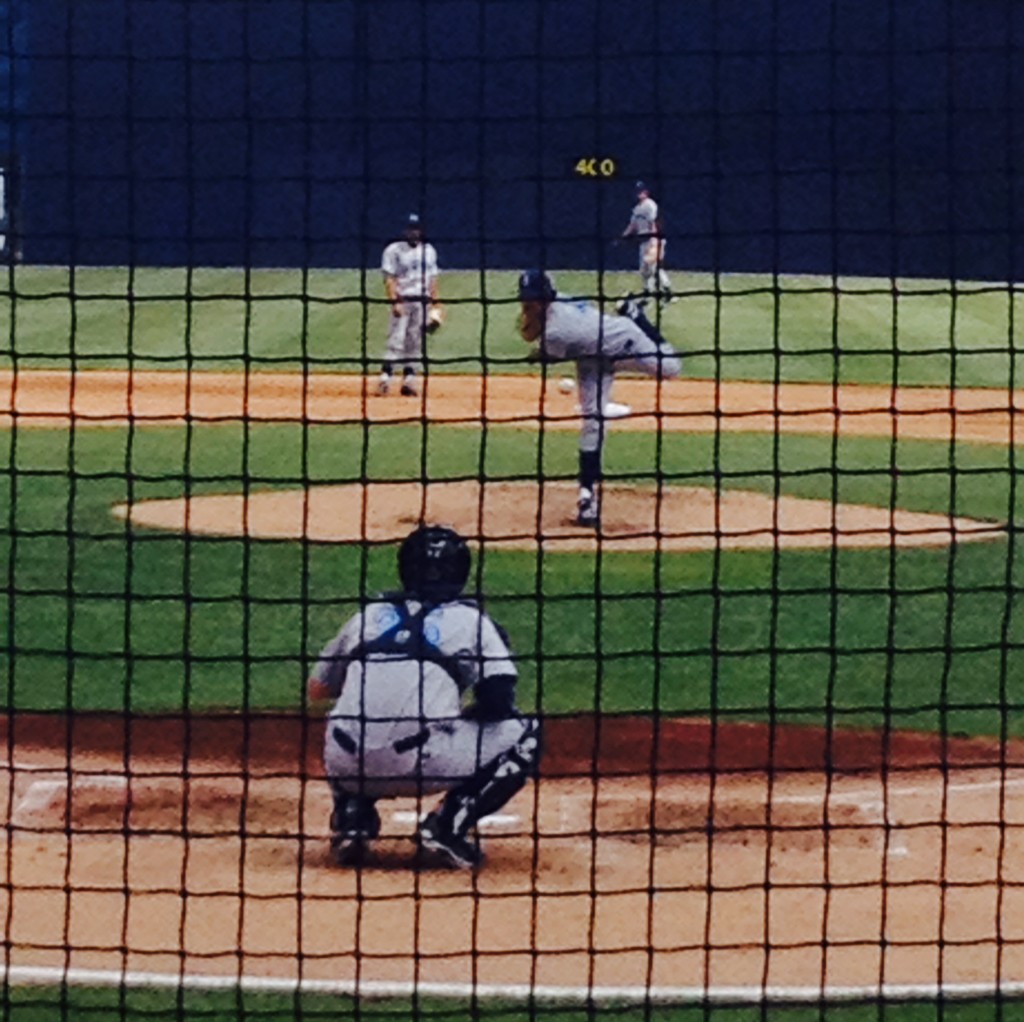
This start was a tremendous microcosm of Manaea as a prospect, as he has both obvious current strengths and weaknesses. When he locates them in the strike zone, he showed an above-average fastball with late life and a quality 2-seamer that can break bats, along with a put-away slider that can induce strikeouts from lefties and righties. On the other hand, his fastball command (and control) is currently well below-average and he does not have confidence in his changeup, which causes him to struggle against righties.
If Manaea cannot manage to harness his control, and improve his changeup, he looks to be destined to have a career as a late-inning reliever in the majors. However, if the 23-year-old can refine his mechanics and make those improvements, Manaea has a chance to be a quality #3 starter in the major leagues, as soon as late 2015.
Quick Notes:
Wilmington’s starting third baseman, Hunter Dozier, was the Royals 1st round pick last June, and immediately stands out for his imposing physical size. Listed at 6-4 220lbs, he more reasonably resembles an NFL weak-side linebacker than a professional baseball player. However, despite his massive frame, Dozier shows quick instincts in the field and reasonably good speed on the basepaths. These attributes, along with a strong arm, allows him to project as an above-average or better defensive third baseman professionally.
The questions, as per usual, arise with his bat, specifically his ability to make contact, as his apparent above-average or better bat speed and physical strength should allow him to hit for above-average power. Dozier looks like a polished college hitter at the plate, with a good approach of hunting fastballs while recognizing and avoiding off-speed pitches. Dozier needs development time to refine his hitting mechanics, but he is an intriguing prospect with 20-10 potential from third base. I would be surprised if he was not considered a top-50 prospect in baseball at the end of this season.
Saturday’s starter for Wilmington, right-handed pitcher Luis Santos, was impressive through 5 innings before running out of steam in the 6th. Before tiring, Santos overwhelmed the Keys’ lineup with a 90-93mph fastball, an 86-89mph 2-seam fastball with sinking action, a decent 74-77mph curveball, and a quality 82-84mph changeup with excellent deception and sinking depth. Perhaps a long-term reliever due to his size (6-0 180lbs) and the resulting stamina concerns, Santos is a talented arm being overlooked in the talent-rich Royals farm system.
Matt Hobgood entered the game in the 8th inning for the Keys Saturday night in relief, and showed the stuff that got him drafted #5 overall in 2009, dominating Wilmington with a 91-95mph fastball (touching 96mph) and a hard-breaking 84-86mph slider. Hobgood struggled to throw his slider for strikes and tired in his second inning of work, but if the 23-year-old can polish his breaking ball, he stands an excellent chance of developing into a late-inning major league reliever.

